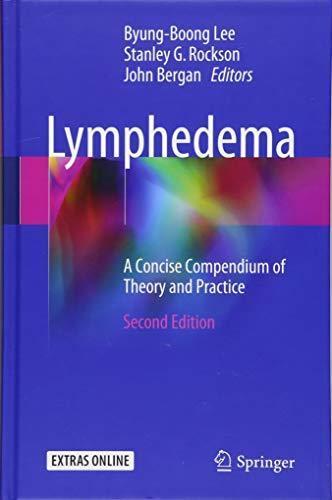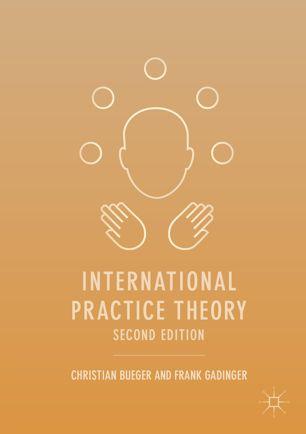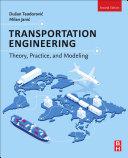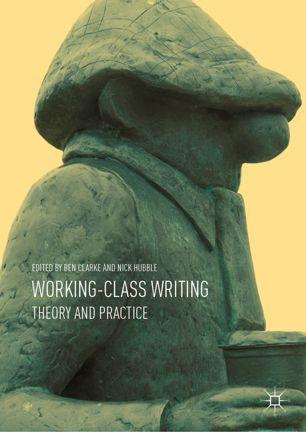Preface to the First Edition
It is truly fortunate that, as we enter the twenty-first century, the fields of lymphatic biology and medicine are experiencing a highly anticipated renaissance. This much-needed emphasis upon the study of the lymphatic system is predicted to have a transformative impact upon our understanding of physiology, health, and disease.
Inexplicably, the lymphatic system has been the subject of passive neglect for centuries of medical development. This is, indeed, paradoxical, considering that such a very important component of the human circulation plays an equally important role in the normal functioning of the immune apparatus. Awareness of the importance of lymphatic mechanisms to the continuum of human biology and disease is growing. This «lymphatic continuum» now easily encompasses cardiovascular disease, obesity, autoimmune disease, respiratory and other forms of chronic inflammation, and chronic transplant rejection, among many other expressions of human pathology.
Lymphedema is a central manifestation of both peripheral and visceral diseases of the lymphatic circulation. Any pathological condition of the lymphatic vasculature, whether superficial or internal, regional, or systemic, is predominated by the appearance of the characteristic type of tissue edema that occurs when lymphatic dysfunction supervenes. While there is a broad spectrum of lymphatic vascular diseases, the most common diagnosis in lymphatic medicine is, of course, lymphedema.
This patient population is large and, historically, underserved by the medical community. At last, after decades and centuries of relative neglect, these patients are increasingly receiving attention. It is very timely, and gratifying, that there is now a clinical need for a comprehensive textbook that addresses the problem of lymphedema, and it is equally gratifying to acknowledge that this compendium has called upon the expertise of so many authorities to contribute their collective wisdom.
I am especially honored to collaborate with such an inspiring group of colleagues and, in particular, to have had the privilege to work so closely with my esteemed coeditors, Drs. John Bergan and Byung-Boong Lee.
It is an honor to dedicate this volume to the current and future well-being of our patients with lymphedema.
Stanley G. Rockson, MD Stanford, CA, USA
Corradino Campisi, Corrado Cesare Campisi, and Francesco Boccardo
Ruediger G.H. Baumeister 49 Lymph Node-Venous Microvascular Reconstructive
Gurusamy
Laurence S. Paek, Joseph M. Baylan, Corrine Becker, and Dung H. Nguyen
Akitatsu Hayashi, Giuseppe Visconti, Yukio Seki, Guido Giacalone, Hidehiko Yoshimatsu, Nobuko Hayashi, and Takumi Yamamoto 52 Current Dilemmas and Controversies
Byung-Boong Lee and James Laredo
Chad M. Teven and David W. Chang
James Laredo and Byung-Boong Lee
Mark L. Smith and Bianca J. Molina
X Congenital Vascular Malformation with Lymphatic Involvement
58 General Overview ..................................................................................................... 729
K. Benjamin Lee, James Laredo, and Byung-Boong Lee
59 Primary Lymphedema and Lymphatic Malformation 743
Ningfei Liu
60 Molecular Genetics of Lymphatic and Complex Vascular Malformations ............................................................................................................. 753
Matthieu J. Schlögel, Pascal Brouillard, Laurence M. Boon, and Miikka Vikkula
61 Syndromic Lymphedema and Complex Vascular Malformations with Lymphatic Involvement ......................................... 765
Francine Blei
62 An Atlas of Neonatal and Infantile Lymphedema 777
Cristóbal Miguel Papendieck and Miguel Angel Amore
XI Management of Chyle Reflux and Effusions
63 Pathophysiology and Medical Management of Chylous Disorders 799
Francine Blei
64 Surgical Management of Chylous Reflux and Effusions .................. 807
Ying Huang and Peter Gloviczki
65 Endovascular Catheter-Based Management of Chylous Effusions 823
Max Itkin
XII Lymphatic Filariasis
66 Epidemiology 841
Stanley G. Rockson
67 Etiology and Pathophysiology ......................................................................... 849
Sasisekhar Bennuru, Subash Babu, and Thomas B. Nutman
Phlebolymphedema
Contributors
Claudio Allegra Angiology Department
San Giovanni Hospital Rome, Italy allegra@mclink.it
Miguel Angel Amore, MD, FACS
Phlebology and Lymphology Unit
Central Military Hospital Buenos Aires, Argentina
Laboratory of Vascular Anatomy University of Buenos Aires Buenos Aires, Argentina miguelangelamore@hotmail.com
Jane M. Armer, PhD, RN, FAAN, CLT
Sinclair School of Nursing Nursing Research Ellis Fischel Cancer Center University of Missouri Columbia, MO, USA armer@missouri.edu
Nathan C. Armer, MEd Sinclair School of Nursing University of Missouri Columbia, MO, USA armernc@missouri.edu
Subash Babu
Laboratory of Parasitic Diseases
National Institute of Allergy and Infectious Diseases, NIH Bethesda, MD, USA
NIH-NIRT- ICER, Chennai, India
Michelangelo Bartolo
Angiology Department
San Giovanni Hospital Rome, Italy
Ruediger G.H. Baumeister
Ludwig Maximilians University Munich Munich, Germany baumeister@lymphtransplant.com
Joseph M. Baylan, MD
Stanford University Palo Alto, CA, USA
Corrine Becker, MD
American Hospital of Paris Paris, France corinne.becker.md@gmail.com
K. Benjamin Lee
George Washington University Washington, DC, USA KBenjaminLee@gmail.com
Sasisekhar Bennuru
Laboratory of Parasitic Diseases
National Institute of Allergy and Infectious Diseases, NIH Bethesda, MD, USA bennurus@niaid.nih.gov
Francine Blei, MD
Vascular Anomalies Program
Lenox Hill Hospital of Northwell Health New York, NY, USA fblei@northwell.edu
Francesco Boccardo Department of Surgery Unit of Lymphatic Surgery University of Genoa Genova, GE, Italy francesco.boccardo@unige.it
Laurence M. Boon
Human Molecular Genetics de Duve Institute, Université catholique de Louvain Brussels, Belgium
Center for Vascular Anomalies Division of Plastic Surgery Cliniques universitaires Saint-Luc Université catholique de Louvain Brussels, Belgium
Pierre Bourgeois, MD, PhD Institut Jules Bordet, Brussels, Belgium pierre.bourgeois@bordet.be
J. Brandon Dixon Parker H. Petit Institute for Bioengineering and Bioscience, Georgia Institute of Technology Atlanta, GA, USA dixon@gatech.edu
Glen Brice Lymphovascular Research Unit St George’s University of London London, UK
Håkan Brorson Department of Clinical Sciences in Malmö Lund University Plastic and Reconstructive Surgery Skåne University Hospital SE-205 02 Malmö, Sweden Hakan.Brorson@plastsurg.mas.lu.se
Pascal Brouillard
Human Molecular Genetics, de Duve Institute, Université catholique de Louvain Brussels, Belgium
Corradino Campisi Department of Surgery Unit of Lymphatic Surgery University of Genoa Genova, GE, Italy campisi@unige.it
Corrado Cesare Campisi Department of Surgery Unit of Lymphatic Surgery University of Genoa Genova, GE, Italy
Marco Cardone San Giovanni Battista Hospital, ACISMOM Rome, Italy
Anita Carlizza Angiology Department San Giovanni Hospital Rome, Italy
Attilio Cavezzi Eurocenter Venalinfa San Benedetto del Tronto, AP, Italy info@cavezzi.it
Janet S. Chance-Hetzler, DNP,MSN,RN,APRN, ACNS-BC,AOCNSCNE
Sinclair School of Nursing University of Missouri Columbia, MO, USA chancehetzlerj@missouri.edu
David W. Chang, MD, FACS Section of Plastic and Reconstructive Surgery
The University of Chicago Medicine Chicago, IL, USA dchang@surgery.bsd.uchicago.edu
Jie Jane Chen Department of Radiation Oncology Stanford University School of Medicine and Stanford Cancer Institute Stanford, CA, USA jjchen15@stanford.edu
Robert J. Damstra Department of Dermatology Expert Center on Lympho-Vascular Medicine, Nij Smellinghe Hospital Drachten, The Netherlands r.damstra@nijsmellinghe.nl
Joseph Dayan, MD Division of Plastic and Reconstructive Surgery
Memorial Sloan Kettering Cancer Center New York, NY, USA joseph.dayan.md@gmail.com
Jie Deng, PhD, RN, OCN
Vanderbilt University School of Nursing Nashville, TN37240, USA jie.deng@vanderbilt.edu
Elizabeth S. Dylke University of Sydney Sydney, Australia
Lowell T. Edgar Department of Bioengineering Imperial College London, London, UK
Kendal Endicott George Washington University Washington, DC, USA kmendicott@email.gwu.edu
Alessandro Failla San Giovanni Battista Hospital, ACISMOM Rome, Italy
Joseph L. Feldman, MD, CLT-LANA NorthShore University HealthSystem, Pritzker School of Medicine, University of Chicago Chicago, IL, USA JFeldman2@northshore.org
Etelka Földi Clinic for Lymphology Földiklinik, Hinterzarten Baden-Württemberg, Germany etelka.foeldi@foeldiklinik.de
Martha Földi Clinic for Lymphology Földiklinik, Hinterzarten Baden-Württemberg, Germany
Eri Fukaya, MD, PhD Vascular Medicine, Stanford University Stanford, CA, USA efukaya@stanford.edu
Guido Giacalone Department of Lymphatic Surgery AZ Sint- Maarten Hospital Mechelen, Belgium
Sergio Gianesini Vascular Diseases Center University of Ferrara Ferrara, FE, Italy
Uniformed Services University of the Health Sciences, Bethesda, MD, USA sergiogianesini@gmail.com
Peter Gloviczki, MD Division of Vascular and Endovascular Surgery Mayo Clinic Rochester, MN, USA gloviczki.peter@mayo.edu
Kristiana Gordon
Dermatology and Lympho-vascular Medicine Department St George’s University Hospital London, UK Kristiana.Gordon@stgeorges.nhs.uk
Akitatsu Hayashi
Department of Plastic and Reconstructive Surgery
Asahi General Hospital Tomari, Japan promise6me5now@gmail.com
Nobuko Hayashi Department of Plastic and Reconstructive Surgery
Asahi General Hospital Tomari, Japan
Joshua Hooks
Parker H. Petit Institute for Bioengineering and Bioscience
Georgia Institute of Technology Atlanta, GA, USA
Kathleen Horst Department of Radiation Oncology
Stanford University School of Medicine and Stanford Cancer Institute Stanford, CA, USA kateh@stanford.edu
Ying Huang, MD, PhD Division of Vascular and Endovascular Surgery
Mayo Clinic Rochester, MN, USA Huang.Ying@mayo.edu
Max Itkin, MD, FSIR Radiology and Pediatrics
CHOP/HUP Center for Lymphatic Imaging and Interventions Philadelphia, PA, USA
Children’s Hospital of Philadelphia, Penn Medicine Philadelphia, PA, USA
Hospital of University of Pennsylvania 3400 Spruce Street, Philadelphia, PA19004, USA Maxim.Itkin@uphs.upenn.edu
Marta Jakimowicz-Cakala Mossakowski Medical Research Center Department of Epigenetics Polish Academy of Sciences Warsaw, Poland
Seiji Kato, PhD Professor Emeritus, Faculty of Medicine Oita University Oita, Japan skato@med.oita-u.ac.jp
Vaughan Keeley Derby Teaching Hospitals NHS Foundation Trust Derby, UK
University of Nottingham Nottingham, UK vaughan.keeley@nhs.net
Sharon L. Kilbreath Health Sciences University of Sydney Sydney, Australia sharon.kilbreath@sydney.edu.au
James Laredo
Center for the Lymphedema and Vascular Malformations, Division of Vascular Surgery Department of Surgery
George Washington University Washington, DC, USA jlaredo@mfa.gwu
Byung-Boong Lee
Center for the Lymphedema and Vascular Malformations, Division of Vascular Surgery, Department of Surgery
George Washington University Washington, DC, USA
Department of Surgery
Uniformed Services University of the Health Sciences, Bethesda, MD, USA bblee38@comcast.net
Mi-Joung Lee
The University of Sydney, Faculty of Health Sciences, Discipline of Physiotherapy
Sydney, New South Wales, Australia mi-joung.lee@sydney.edu.au
J. Leonel Villavicencio
Distinguished Professor of Surgery Department of Surgery, Uniformed Services
University School of Medicine, Director
Emeritus Venous and Lymphatic Teaching
Clinics, Walter Reed Army and National Naval Medical Centers
Washington DC and Bethesda, MD, USA jvillavicencio@me.com
Ningfei Liu, MD, PhD
Lymphology Center of Dept. Plastic & Reconstructive Surgery, Shanghai Ninth People’s Hospital, Shanghai Jiao Tong University School of Medicine, 639 Zhi Zao Ju Road, Shanghai, 200011, China
liuningfei@126.com
Gurusamy Manokaran, MS, MCh., (Plastic), FICS, FRCS
Senior Consultant Plastic & Reconstructive
Surgeon & Lymphologist, Apollo Hospitals 21, Greams Road, Chennai, India
Past President “International Society of Lymphology”, Tucson, Arizona, USA
Honorary Associate Prof. Macquarie University
Sydney, NSW, Australia gmano.dr@gmail.com; manokaran_g@yahoo.com
Sahar Mansour
Lymphovascular Research Unit
St George’s University of London London, UK
Erica Menegatti Vascular Diseases Center University of Ferrara Ferrara, FE, Italy mngrce@unife.it
Sandro Michelini
San Giovanni Battista Hospital, ACISMOM Rome, Italy
sandro.michelini@fastwebnet.it
Christine Moffatt School of Health Sciences, University of Nottingham, Nottingham, UK
Derby Teaching Hospitals NHS Foundation Trust Derby, UK
Cardiff Wound Healing Institute; Kanasawa University; Western Ontario University, LOROS, UK, Glasgow University Glasgow, UK
christine.moffatt@nottingham.ac.uk
Bianca J. Molina
Department of Plastic Surgery Wexner Medical Center, Ohio State University Columbus, OH, USA
Giovanni Moneta
San Giovanni Battista Hospital, ACISMOM Rome, Italy
James E. Moore Jr.
Department of Bioengineering Imperial College London London, UK james.moore.jr@imperial.ac.uk
Peter S. Mortimer Dermatology and Lympho-vascular Medicine Department
St George’s University Hospital London, UK mortimer@sgul.ac.uk
Another random document with no related content on Scribd:
About the year of grace 365—St. Jerome be my witness!— Epidaurus and its inhabitants were in a very bad way.
Now hard-by Epidaurus was a certain cave called Scipum, in which they of that city were wont to draw water. And in this cave a grievous dragon[325] called Boas had taken his abode, and wrought much slaughter both of men and cattle. And it came to pass that St. Hilarion entered the city, and when he saw that they of that place quaked and feared, for the dragon was of huge and monstrous size, he bade them be of good heart, for that he would slay the fiend. Now Epidaurus was yet pagan. Therefore St. Hilarion gat him to the mouth of the cavern, and having made the sign of the holy cross, he cried with a loud voice and saith unto the monster, ‘Come forth.’ But when the dragon Boas heard the voice of the holy man, then quailed his heart within him, and he came forth. Then saith St. Hilarion unto the dragon, ‘Follow me.’ And the dragon followed him, and he went on foot till he came to a place called ‘the mills,’ which is distant from the city three miles and fifty paces. And when they were come there, St Hilarion saith unto them of Epidaurus that went with him, ‘Make now a pyre that we may consume the monster and his works.’ And the pyre being now made, St. Hilarion saith unto the dragon Boas, ‘Get thee on to the pyre.’ And the dragon gat him on to the pyre. Then was fire set to the pyre that the dragon was utterly consumed. But they of Epidaurus, when they saw what salvation was wrought for them by the holy man, rejoiced in spirit. And at that spot which is called ‘the mills’ they built a temple to the honour and praise of St. Hilarion. And once in every year, at a set season, there went thither much people from Epidaurus, and offered worship unto St. Hilarion, singing pagan hymns, and before sundown returned to their own city.
So much for the true and faithful legend of St. Hilarion; and if anyone doubts its veracity, let him know that the mills are to be seen unto this day, and that the village hard-by them, S. Ilarione, preserves the name[326] of the saintly dragon-slayer, who, I may add, is still held in great veneration by the Ragusan church. But how
interesting is this personified triumph of Christianity over the Cadmean and Æsculapian serpent-worship of earlier Epidaurus!— how suggestive is this annexation of local mythology by the new religion!
It may be believed that after this miracle the faith grew in Epidaurus, especially when, twenty years afterwards, St. Hilarion followed up his first success by once more appearing as saviour of the city. In the year 385, we are told there was a grievous earthquake, and the waves were piled up like mountains, and threatened to engulf Epidaurus. But the saint graved three crosses in the sand of the seashore, and the ocean, which hearkened not to Cnut, obeyed Hilarion. Christian bishops of Epidaurus are mentioned in the sixth and seventh centuries, and we hear of one nine years before the final overthrow and transplantation of the city. I did not notice any Christian monuments on the site of Epidaurus of Roman date; but I was pleased to find in a cottage of Ragusa Vecchia, built into the interior wall of an upper room, a very beautiful monument of mediæval Christian art, which I have here attempted to represent. It was known to the cottagers as the ‘Bambino,’ and represents the Mother and Child; but the influence of classical art is strongly marked, and though the tenderness of the whole design is Italian, the head of the Virgin might have been mistaken for a heathen goddess.

Virgin and Child.
As early as A.D. 550 the Sclaves had begun to annoy Epidauras, but it was not till the year 656 that the city finally yielded, it is said to a combined attack, on land by the heathen Narentines and Terbunians, and from the sea by Saracen corsairs from Africa. Then it was that the survivors of the Roman population fled to the rocky site on the other horn of the gulf on which Ragusa stands. Every morning the same migration from Old to New Ragusa takes place on a smaller scale. A bevy of bright Canalese market-women, in their clean white crenellated caps, and their more sombre husbands— who, with their black turbans, jackets, and trouser-leggings, look like Turks in mourning—embark before dawn in the broad trabaccolo, that they may sell their fruit and vegetables in the Ragusan market. In their company I will return to Ragusa and her history.
The rock on which the refugees from Epidaurus laid the foundations of what is now Ragusa, is said originally to have been an island, though it is now only a peninsula. Ragusa herself owes her name, according to Constantine Porphyrogenitus,[327] to the Greek word Λαῦ, signifying ‘rock,’ and the fact that the rock on which
the original city was built was known long afterwards as ‘Lavve’ is rather favourable to the Byzantine etymology. Thus, both her name and origin are representative of the rôle which the city was to play throughout her earlier history, and to which she owes so much of her greatness. Like ancient Rome, Ragusa began life as an asylum. She was at first a rock of refuge for the survivors from the wrecks of Roman coast-cities of Dalmatia. The fugitives from Epidaurus obtained citizen recruits from those inhabitants of Salona who, when their city was destroyed, did not trust to the walls of Diocletian’s palace for security, or could not find room there. Later on, when the Roman cities that occupied the sites of the present towns of Rizano, Cattaro, Budua, and other places on the Bocche di Cattaro and the Albanian coast, were ravaged by the Saracen corsairs, a new influx of Roman refugees set in to Ragusa.
Ragusa was thus originally Roman. Her necessities led her to ally with the Eastern Empire against the Saracen corsairs, and, however little real authority the Byzantine Emperors possessed within her walls, Constantine Porphyrogenitus places Rausium among the imperial cities on the Dalmatian coast. But this Roman coast-city, with her inheritance of ancient civilisation, was already consummating that alliance with the ruder energies of the Sclavonic mainland, to which her future eminence was so largely due.
The barren mountain which frowns so abruptly over Ragusa on the land-side, was once covered with an immemorial pinewood,[328] which stretched over a large part of what is now included in the mediæval walls of Ragusa. It was in this wood that a Sclavonic colony settled, outside the Roman rock stronghold, and as in process of time the two populations blended, Dubrava which signifies ‘the wood,’ and had been the name given by the Sclaves to their colony outside the walls—was attached to the whole city, so that Ragusa is still known to the Sclavonic world as Dubrovnik—the forest town.
For long the new rock asylum is engaged in a life-and-death struggle with the Saracen corsairs, who desolated the Dalmatian and Albanian coasts. Generally, still Roman Ragusa turns to the
Byzantine Empire as her natural protector; but for a moment we see dimly reflected in her saga the influence of the revived Empire of the West; and one may, perhaps, be allowed to see in it a witness to the authority which for a while the great Carl succeeded in extending over the Illyrian Sclaves. We were surprised to find in the more classic court of the Palazzo Rettorale here, a colossal statue such as one meets with often enough beneath the quaint gables of a NorthGerman Rathhaus. It was, in fact, a Ragusan Rolandsäule. According to the Ragusan annalists, Orlando, or Rolando, the sister’s son of Carl the Great, and a brave Paladin, had heard in Bretagne, where he was governor, that Saracen corsairs were ravaging the Roman towns of the Adriatic. Orlando at once set out for Ragusa, embarked on board a Ragusan galley, won a sea-victory over the Saracen pirates off the island of Lacroma opposite, took their Emir Spucento captive, and cut off his head in Ragusa. Thereupon the grateful Ragusans set up then and there a marble statue of Orlando, which remains unto this day.[329]
Another time the treacherous Venetians prepare to surprise Ragusa under the pretence of provisioning their ships. But St. Blasius, of Armenia, appears to a priest in a dream and warns him of the danger to the city. The priest gave the alarm, the walls were manned in time, and Ragusa showed her gratitude to her preserver by choosing him as her patron saint. A church was reared to St. Blasius, his effigy was placed on the great seal, the banners, and coins of the Republic, and his miraculous interposition was commemorated every year at the feast of the Purification.
This is not the place to trace out all the ‘dim complicacities’ of Ragusa’s earlier history. Ragusa was by birthright a City of Refuge, and her rise was mainly due to the wise and heroic policy of defending at any cost her rights of hospitality. Whether it be the children of the rightful king of Serbia, or the widowed queen of Dalmatia, or the Bosnians who had fled from the wrath of their Ban, all alike obtain shelter from their pursuers within these hospitable walls. Again and again Ragusa consented to see her territory
ravaged and her walls beleaguered for the protection which her Senate accorded to the unfortunate. When Bodin, the Grand Župan of Serbia, Rascia, and Bosnia, then at the height of his power, demanded the extradition of the sons of the Serbian prince whose dominion he had usurped,[330] and threatened in case of refusal ‘to fly his eagle to the destruction of Ragusa,’ the Senate nobly replied ‘that it was the custom of their city to refuse asylum to no man, but to protect everyone who fled to them in misfortune.’ On this occasion Ragusa underwent a seven years’ siege.
Even those who had been the bitterest enemies to the Republic were glad in less prosperous days to throw themselves on a hospitality that never failed. Bogoslave, the king of Dalmatia, had besieged Ragusa with 10,000 men for sheltering the widowed queen, Margarita; but when, on his death, his widowed queen and son were driven forth from their country, Ragusa did not hesitate to give them shelter, too. Stephen Némanja, the Grand Župan of Serbia and Rascia, who had twice laid siege to Ragusa, once with an army of 20,000 horse and 30,000 foot, seeing himself likely to be worsted in his struggle with the Byzantine Emperor, sent to ask the senate of Ragusa if he, too, should be allowed to claim their right of asylum, and obtained permission to retire here with his family if defeated; and that, though his adversary was allied to the republic.
A city strong enough and generous enough to shelter the unfortunate on either side could not fail to find many well-wishers among the neighbouring peoples and princes; and though Ragusa suffered much in defence of her privilege of asylum, she won more. Silvester, a king of Dalmatia, who had found shelter within her walls, on recovering power, testified his gratitude by presenting Ragusa with the islands of Calamotta, Mezzo, and Giupan. Stephen, a former king, in return for hospitality conferred on him as a voluntary guest, made over to the Republic the neighbouring coast-lands from the Val-di-noce to Epidaurus. The good relations which she cultivated with the Bosnians, and the gratitude of the Némanjas, enabled Ragusa to lay the foundations of her commercial eminence in the
heart of Illyria; and in 1169 two Ragusan merchants built a factory on the site of what has since become the capital of Bosnia.
But Ragusa obtained one reward for hospitality to a royal stranger which must claim an especial interest from Englishmen. Richard Cœur-de-Lion, during his ill-fated voyage from the Holy Land, overtaken by a storm in the Adriatic, vowed that he would build a church at the spot where he should reach land in safety. He landed on the small rocky island of Lacroma, which lies opposite the old port of Ragusa. But he was conducted to the neighbouring city of Ragusa with great pomp by the Senate, and entertained with such profuse hospitality and magnificent shows, that he yielded to the prayers of the Ragusans, and obtained a dispensation from the Pope, to build the promised church in Ragusa itself, though it appears that his Holiness made him build a small church on Lacroma as well. The church which was now built with English money (though Richard had to borrow for the purpose), was the old cathedral of Ragusa. For beauty it was unrivalled in Illyria,[331] but unfortunately no trace of it now remains, as it was entirely destroyed by the earthquake of 1667.
The year 1203 marks a new epoch in the history of Ragusa. In this year the Rector of the Republic, Damiano Juda, endeavoured to prolong his government beyond the year for which he had been elected. By the help of the popular party he succeeded in retaining the supreme authority for two years, and became so obnoxious to the nobles, that considering the suzerainty of a foreign state to be preferable to the tyranny of a fellow-citizen, they held a secret conclave in which it was decided to invoke the aid of Venice. The Venetians, whose power from the recent conquest of Constantinople was then at its zenith, accepted the overtures of the Ragusan nobles. Damiano was decoyed on board a Venetian ship, where, on finding himself a prisoner, he committed suicide; and Lorenzo Quirini, the nominee of Venice, was introduced as Count of the Republic. But Ragusa never sank like Zara or Spalato, and the other Dalmatian cities, under Venetian domination. Quirini had only been
received on condition that Ragusa should preserve her ancient liberties. When the Ragusans began to perceive an intention on the part of the Venetian Count to violate this agreement they turned him out; and though they once more received a nominee of Venice in 1232, the relation of the Ragusans to Venice was rather that of a free ally than that of a dependent. It was indeed stipulated that the Doge and a majority of the Venetian Senate should nominate the Count of Ragusa, that her archbishop should be born on Venetian territory, and that her citizens should swear fealty to the Doge; but Ragusa retained the right of conducting her own affairs by means of her Senate, of which the Count was only president; she was still governed by her own laws; her own flag floated from her walls, and she struck her own coins with the effigy of St. Blasius. The treaty stipulates that both states are to have the same friends and foes; but towards Venetian expeditions beyond the Adriatic, Ragusa was only to contribute one thirtieth. So free indeed was Ragusa, that in fact she never accepted Venetian archbishops; and in 1346 the Venetian Contewas forced to look on and see the republic transfer its suzerainty to the new Serbian empire of Czar Dūshan.
Thus it was that Ragusa, though for a while under Venetian overlordship, never, like the other Dalmatian cities, saw her native institutions swept away by Venice. At the present day, at Cattaro or Spalato, along the Dalmatian coast-land on each side of Ragusa, you hear the Venetian dialect; at Ragusa the language is pure Tuscan. St. Blasius, and not the lion of St. Mark, adorns the mediæval walls and gates of Ragusa. On the other hand, in costume, manners, and the form of government, the Venetian influence here has been very perceptible.
It is about the time of the Venetian suzerainty that the government becomes finally fixed.
Ragusa had doubtless originally inherited her aristocraticrepublican institutions[332] from the municipales of ancient Epidaurus. Her Senate, which we hear of in very early days, is doubtless, like the Senates of Arles, Nismes, Vienne, and the other
great cities of Languedoc and Provence, but a continuation of the Roman Curia, of whose existence in Epidaurus we have both historic and epigraphic proof. Her patricians could no doubt trace back their ancestry to the late Roman Honorati; they were twitted, indeed, with tracing it back to Jupiter!
From the time of the Venetian suzerainty onwards, the government is vested in three councils, and the city divided into three orders: the Nobili or Patrizj, the Cittadini, divided into the two Confraterniteof S. Antonio and S. Lazzaro; lastly the Artigiani, who appear to have stood to the Cittadini much as our craft-guilds to the merchant-guilds. The government was entirely aristocratic; the Cittadini could indeed fill some public offices,[333] but the appointments were reserved for the Senate.
The body in which the sovereignty ultimately rested was the Gran Consiglio,[334] including all the members of the nobility who had reached the legal age of eighteen, and whose names were registered in the Specchio di Maggior Consiglio, a Ragusan Libro d’Oro. This body elected, every month, the Rector of the Republic, and, annually, all the great magistrates, imposed the customs and ordinary taxes, confirmed or abolished laws, and possessed the power of pardoning and passing sentence of death.
The more ordinary functions of government were in the hands of two smaller bodies. The Senate, or Consigliode’Pregati, composed of forty-five members, drew up the laws and imposed extraordinary and indirect taxes, appointed ambassadors and consuls, decided on peace or war, treated of important state affairs, and acted as a court of appeal. The Senate met four times a week, and on occasions of emergency. The members were elected for life from its body by the Gran Consiglio, but were confirmed in their office every year by this greater council, and sometimes a Senator was suspended by it from his functions.
Lastly, the Minor Consiglio, consisting of seven senators and the Rettore of the Republic, acted as the executive of the greater
council, exercised judicial authority on greater cases, received ambassadors, and treated with foreign Powers.[335] The Rettore of the Republic, who presided over this body, held office only a month, during which time he was bound to reside perpetually in the Palazzo Rettorale, only leaving it on public occasions.[336] He was clad in a long red robe, with a black stole over his shoulders as a sign of supreme authority, kept the keys of the city, the archives of the Republic, and convoked the Gran Consiglio and Senate. As a further constitutional precaution, thoroughly Venetian, three magistrates, called Provveditori della Repubblica, were chosen, who were superior to all but the Senate and Greater Council, and who possessed the right of suspending laws and decrees, and their execution till the Senate had re-examined them.[337]
Truly, from a constitutional point of view, Ragusa deserved her title of Piccola Venezia! But the aristocratic government at Ragusa worked with even greater smoothness than at Venice. Though the rule of the Ragusan patricians had endured for nigh seven centuries before the time of Damiano Juda, and was prolonged for over five centuries after his date, it was only broken by this solitary revolution.[338] Take into consideration the small size of the city, and the stability of the Ragusan constitution becomes the more remarkable. Here there was no room for feudal lords living on their own domains, amidst their own retainers, protected and secluded by moats and castle walls. The nobles of Ragusa elbowed their fellowcitizens in the same narrow streets; and these fellow-citizens, far from being ignorant serfs, were often their equals in education and their superiors in wealth. Yet the Cittadini and Artigiani of Ragusa were content to leave the reins of government in the hands of an aristocratic caste, and that caste was so exclusive that during eight hundred years there is no single instance recorded of a mésalliance with the bourgeoisie.
The secret lies in the sober genius of both the nobles and people of Ragusa, and in that elevated conception of patriotism which linked it with their religion. A judicial gravity presides over the whole
constitutional history of Ragusa. The governing classes looked on their authority, not as a mere prize of birth, but as a sacred trust. The prayer for the magistrates of the Republic, which opens the Ragusan Librod’Oro, breathes that exalted spirit which animated all classes of Ragusan citizens from first to last. ‘O Lord, Father Almighty, who hast chosen this Commonwealth to Thy service, choose, we beseech Thee, our governors according to Thy will and our necessity; that so, fearing Thee and keeping Thy holy commandments, they may cherish and direct us in true charity. Amen.’[339]
Turn where we will among the pages of Ragusan history, we find ourselves amongst a grave and sober people—a people who are never carried away with success, and who support adversity with calm endurance. The heroes of Ragusa are of the majestic Roman type, and her greatest is a second Regulus. Her peculiar genius reflects itself in her arts and sciences, which are severe and practical. Her Senate forbids the erection of a theatre. The fine arts here fall into the background, and mathematics, mechanics, and astronomy take the lead. Ragusan nobles are mathematicians, and her poets are also merchants; the masterpieces of her muse are stately epics. Her sympathies are with the dignified spirit of the East, and the noblest homage of her bards is rendered to a Turkish Grand Signior. But Ragusa nowhere displayed the severe gravity of her manners more conspicuously than in the education of her children. Palladius,[340] writing in the middle of the fifteenth century, says of the Ragusans: ‘To make manifest how great is the severity and diligence of the Ragusans in the bringing up of their children, one thing I will not pass over, that they suffer no exercises to exist in the city, but literary. And if jousters or acrobats approach they are forthwith cast out, lest the youth (which they would keep open for letters or for merchanding) be corrupted by such low exhibitions.’ Truly, in mediæval Ragusa, Jack must have been a dull boy!
The same sober and religious spirit asserts itself in the laws, and the philanthropic and industrial institutions of mediæval Ragusa. Few
indeed were the towns which could boast of a City Police and Sanitary Board in the middle ages! There was a ‘Curates’ Augmentation Fund’ here in the fourteenth century;[341] this city lays claim to having possessed the first foundling hospital[342] and the first loan-bank in the civilised world, and the annual revenues of the pious institutions of Ragusa amounted to 800,000 ducats. If we except the early English legislation which put a stop to the human exports of Bristol, Ragusa was the first state to pass laws abolishing the slave trade. In the year 1416 the great council of Ragusa, hearing that several Ragusan merchants residing on the Narenta were in the habit of selling those under them as slaves, passed a law —by a majority of seventy-five in a house of seventy-eight—that anyone who henceforth sold a slave should be liable to a fine and six months’ imprisonment: ‘Considering such traffic to be base, wicked, and abominable, and contrary to all humanity, and to redound to the no small disgrace of our city—namely, that the human form, made after the image and similitude of our Creator, should be turned to mercenary profit, and sold as if it were brute beast.[343] During the sixteenth, seventeenth, and eighteenth centuries, large sums were left by philanthropic citizens of Ragusa to be spent in purchasing the freedom of slaves.
Perhaps the stability of the Ragusan government is due as much to her peculiar situation as to the sobriety of her citizens. Ragusa is well described by mediæval writers as a ‘Palmyra between great empires.’ She had to preserve her independence in turn from Byzantine Cæsars, the pirate state of the Narentines, the queen of the Adriatic, the Serbian Czar, the kings of Hungary, and finally from the Turks and Spaniards. She had to be perpetually on her guard against the ambitious designs of the most powerful states of the mediæval world. When her neighbours quarrelled, she was continually placed in the most difficult position, and the ramifications of her trade put her at the mercy of the most remote assailant. Thus it was that in her government foreign affairs were of supreme importance; there was constant necessity for secret discussion, prompt decision, and the wisdom of a hereditary caste of statesmen.
A state whose empire is mercantile must be mighty indeed to afford the luxury of popular government. Ragusa was too small, too closely bordered by powerful empires; and the sterling sense of her citizens acquiesced in the necessity of an aristocratic constitution.
Nothing, indeed, is more wonderful in the history of the Republic than the tact with which these hereditary diplomatists conducted foreign affairs. In an earlier stage of her history, and a ruder state of society, we have seen the obstinacy with which the Senate clung to the Ragusan rights of asylum. In a later and more diplomatic age the City of Refuge becomes the champion of the rights of neutrals. We are lost in wonder at the skill with which the Republic preserves its neutrality between Venice and the Greeks, Venice and the Narentines, Venice and the Hungarians; between the Serbian Czar and Byzantine Cæsar, between the Turks and the Hungarians, the Turks and the Venetians, the Turks and the fleets of Charles V. It appears to have been a secret of Ragusan policy to yield a certain suzerainty to that Power which was strong on the mainland. While Venice is omnipotent in Dalmatia, Ragusa recognizes the overlordship of the Doge; Czar Dūshan stretches the Serbian empire to the sea, and Ragusa transfers to him her homage. The Serbian empire breaks up; the Hungarian flag floats on the walls of the Dalmatian cities in place of the lion of St. Mark; and from 1358 to 1483 Ragusa accepts the suzerainty of the kings of Hungary. But with admirable perception the statesmen of Ragusa turn towards the rising sun; and already, in 1370, when the rest of Eastern Europe was hardly conscious of the existence of its future conquerors, the Ragusans sent an embassy to Broussa, in Asia Minor, to the successor of Orchan,[344] Emir of the Turks, in which, in return for a yearly payment of 500 sequins, they obtained a firman of trade privileges, still preserved in the archives of Ragusa, and laid the foundations of a friendship which afterwards saved the small Republic when the empire of Byzantium, the despotates of Serbia and Albania, and the kingdoms of Hungary and Bosnia, were swept away. The treaty was renewed with Bajazet, and on his final
conquest of the Herzegovina in 1483, Ragusa, true to her policy, transfers her suzerainty to the Porte.
It was the vast commerce of Ragusa with the interior of the Balkan peninsula which made her government so sedulous in securing friendly relations with the dominant power of the mainland. The citizens were repaid tenfold for their deference to the ruling caste by the benefits which their trade reaped from the keen foresight and the marvellous powers of negotiation displayed by their government. The friendship of Serbian, Bosnian, Hungarian, and later on of Turkish potentates, enabled them to plant their factories throughout the Sclavonic lands that lie between the Adriatic and the Black Sea. At the time of the Turkish conquests the Ragusans possessed mercantile colonies at the Serai in Bosnia, Novipazar in Rascia, Novibrdo and Belgrade in Serbia, at Bucharest and Tirgovisce in Wallachia, at Widdin, Rustchuk, Silistria, and Sophia in Bulgaria, and in the original capital of Turkey-in-Europe, Adrianople. To these colonies the Turks conceded a special jurisdiction, and even the right to build cathedral churches. Ragusan caravans passed without let or hindrance throughout all these lands; and the Pope himself granted the Ragusans permission to trade with the infidels. An astounding monument of the industry of these colonists is found in a treaty between George Branković, despot of Serbia, and the Republic, by which the Ragusan government leased the working of the three gold mines of Novibrdo, Janovo, and Kratovo, for a yearly rent of 300,000 ducats—an enormous sum for those days.
Besides this trade with the Sclavonic interior, Ragusa conducted a maritime traffic with the Levant, and as early as the beginning of the fourteenth century had concluded treaties of commerce with the sultans of Egypt, Syria, Iconia, and Bythinia. Ragusan factories existed in the great Italian cities of the Romagna, the Marches, and Abbruzzo, and throughout Sicily and Naples, and much of the transit trade between those countries and the Levantine ports was conducted in Ragusan bottoms. Of these commercial colonies in Italy, the most important was that which gave the name Stradade’
Ragusei to a street of Florence, and the Messinese, established at Syracuse, which gave the name of Ragusa to a castle that rose above the ruins of Camarina. Her merchants penetrated not only to France and Spain, but even to our shores, whence they transported English wares, especially cloths and woollens, to the south and east. [345] Ragusan merchants were settled in England in the sixteenth century, and later on Cromwell granted the Ragusans trade privileges in English ports. The mighty merchantmen of Ragusa ‘with portly sail, like signiors and rich burghers of the flood,’[346] have added a word to the English language. Our ‘argosy,’[347] once written ‘Ragosie,’ meant originally nothing but a Ragusan carrack. Nor was it only in the peaceful paths of commerce that our forefathers made acquaintance with the stately vessels of Ragusa. As the price of many trade privileges, the Republic was forced to recruit the navies of Spain with her ships and take part in her enterprises. The loftiest carracks in the Spanish Armada sailed forth from the old harbour of Ragusa, and in 1596 twelve Ragusan threemasters fought the English in the Indian Ocean.
By the end of the fifteenth century the commercial bloom of Ragusa had reached its prime, and the city must have been amongst the most flourishing in Europe. As early as 1450 the merchant navy of Ragusa consisted of 300 vessels. ‘There is no part of Europe,’ says the contemporary Palladius, ‘so hidden or so hostile to strangers that you will not find there merchants of Ragusa.’ And this commercial prosperity abroad was supplemented by manufacturing enterprise at home.
In 1490 a Florentine weaver was called in to instruct the Ragusans in cloth-weaving. Mills were built, a Neapolitan constructed a conduit to aid the dyeing, machinery was set in motion by water-power, and in five years a new manufacture was in full operation. A few years later[348] the silk manufacture was introduced by an enterprising citizen of Ragusa from Tuscany. Besides these and such minor industries as supplied the neighbouring Turkish provinces with wax, hides, salt, and sandals, there was the cannon foundry, the powder
mill, the docks, the coral fishery, the glass manufactory, and the production of that filagree work of gold and silver, in which the Ragusans excelled, to divide the energies of the citizens. At the end of the fifteenth century the population of Ragusa is reckoned at 40,000, the treasury of the Republic is said to have contained a reserve of seven million sequins, and the merchants of a single quarter of the city, called Prieko, were possessed of capital amounting to two hundred million ducats.
At this time an additional lustre is shed over the ancient City of Refuge by the nobility of those who sought refuge within her walls. After the fall of Constantinople and the overthrow of the Sclavonic kingdoms of the interior, Ragusa was thronged with fugitive princes of Eastern Europe. Scions of the imperial houses of Byzantium, the families of Lascaris and Cantacuzene, the Comneni and Palæologi, the wife of the Despot of Serbia, the widowed Queen of Bosnia, with a host of lesser rank, sought and found a haven in these hospitable streets; and the name of Stephen, duke of St. Sava, is still to be seen inscribed on the roll of Ragusan nobility in the Specchio del Maggior Consiglio.
But the greatest glory of Ragusa lies neither in her wealth nor her princely hospitality, but rather in the civilizing influence which she exercised over the most barbarous European member of our Aryan family. It is the literature of Ragusa that lives still in the minds of men in days when her commerce has deserted her, and her own nobility has been extinguished with her liberty.
We have seen Ragusa by her very birth partly Roman and partly Sclave. Bit by bit the ‘city of the rock’ becomes fused with the foresttown outside. In her vast and varied intercourse with the Sclavonic interior Roman Ragusa becomes Serbian Dubrovnik. From the beginning of the fourteenth century the Serbian language, so vigorously proscribed by earlier laws, may be considered the mothertongue of Ragusa. In 1472 the Sclavonic language became so dominant that even the Senate had to pass a law enforcing Italian as the language of their deliberations. Thus Ragusa became a Sclavonic
city at the very moment when her extended connection with the rest of Europe, and especially with Italy, brought her into the full current of the Western Renascence. She had become Sclavonic, but she never lost the Italian side to her character. Her wealthy citizens, though they spoke the Serbian dialect of Dubrovnik in their family circles, sent their children to the Florentine schools, and, just as educated Irishmen and Welshmen often speak the best English, so, to this acquired knowledge of Italian, is largely due that purity of accent which has preserved the Italian of Ragusa from the Venetian and Dalmatian barbarisms of the other cities of this coast, and which makes it still the linguaToscanainboccaRagusea.
Ragusa was thus fitted by her very composition to be the interpreter between the Italian and Sclavonic minds, and to give birth to that literature which has won for her the title of ‘the Sclavonic Athens.’ The magistrates of the Republic, true to the same wise policy which had founded her schools, invited hither the most learned men of Italy, and towards the end of the fifteenth century many were enticed to Ragusa as professors, chancellors, and secretaries. Nascimbeno di Nascimbeni, the celebrated philologist, was invited here as rector of the school, and Demetrius Chalcochondylas deserted Florence herself to accept the chair of Greek at Ragusa. For Ragusan culture was something more than a mere reflection of the Italian Renascence, and the exiled scholars of Byzantium flocked hither as to a city which had held literary communion with their own, centuries before the days of its captivity, and whose inhabitants were in some sort their fellow-citizens. As early as the year 1170 the Ragusans had been admitted citizens of Constantinople by Manuel Comnenus, and the Imperial Chamber had undertaken to defray the expense of educating a certain number of Ragusan youths in Greek learning. By the beginning of the fourteenth century Ragusa herself had become a school of Greek for the Serbian mainland. Sclavonic Kings and Czars sent hither the young barons of their realms to be instructed in learning and manners; and the Serbian Czar, Stephen Dūshan, presented the city with a precious collection of codices, Greek and Latin, discovered in
the Illyrian interior.[349] Thus the citizens of Ragusa were in every way well fitted to play a leading part in the revival of letters in Western Europe; it is said that in the fifteenth and sixteenth centuries there was not one of her families but could boast its man of letters; her scholars toiled eagerly at the new learning, and emended the texts of Virgil, Ovid, Cicero, and other classical authors. It is extremely significant of the position held by Ragusa in the world of letters at the end of the fifteenth century, that Aldus Manutius sent his son Paolo here for his classical schooling.
But this erudition was but the prelude to an outburst of original genius such as has been paralleled by few cities of the globe. Perhaps, indeed, no other people had brought before them so vividly every stirring aspect of the most romantic age that the world has seen. The Ragusans had sat at the feet of Byzantine masters in days when learning was their insolent monopoly; they had already been familiarised in the schools of Florence with the masterpieces of Italian genius; they had caught from Virgil and Ovid an inspiration of antiquity; and the dramas of Sophocles had been translated by a fellow-citizen into their Serbian mother-tongue. To these creations of exotic fancy they added, what they had never lost, a heritage of Serbian poetry, enshrining a mythology that had felt in some mysterious way the spell of Arabian genii—a mythology still so real that, to the last days of the Commonwealth, effigies of fantastic Serbian deities, and amongst them the ‘flowery-kirtled’ Vila, were borne in procession at Ragusan carnivals.[350] The merchant-citizens of the Republic had already enlarged their sympathies with the acquaintance of every European people. They had now seen the boundaries of the Old World broken through, and sailed forth to explore the New. They had rounded the Cape in the wake of the Portuguese; their argosies had touched at the port of Goa, and trafficked in the Persian Gulf. They had sailed with the Spaniards to Peru and Mexico; they had marvelled with the followers of Cortes at the temple-pyramids of the Aztecs, and plucked roses in the gardens of Yucay. Nearer home, their imagination had been kindled by the overthrow of an empire which Julius had founded. They were
surveying from their very walls the tragedy of nations, and their streets were thronged with discrowned sovereigns. The most beautiful creations of the Hellenic muse had sprung Aphroditè-like from the spray of the self-same sea that sparkled in the havens of Ragusa.
Living in this poetic world, one can hardly wonder that Ragusa caught the inspiration of her surroundings; that she ‘awoke to ecstasy the living lyre,’ in the tones of her mother-tongue; that, surveying the catastrophe of the Serbian race, she created a Serbian drama. From the commencement of the last quarter of the fifteenth century onwards, Ragusa produces a long succession of poets and dramatists,[351] who are great and valuable almost in proportion as they are unknown to the West. For their pre-eminent value lies in their having composed in a Sclavonic tongue. Amongst the most celebrated works of Ragusan poets may be mentioned the ‘Dervishiade’ of Stephen Gozze, a comic epos; the ‘Jegyupka’ or gipsy-woman, a satiric poem by Andreas Giubronović; and the lyrics of Dominico Zlatarić, also known as a painter, and as translator of Tasso and of some plays of Sophocles. Nor was Ragusa wanting in poetesses to rival her poets; the epigrams of Floria Zuzzeri, who wrote in Italian as well as Sclavonic, are still of renown. But the most celebrated names in the long annals of Ragusan literature are those of Junius Palmotta and Giovanni Gondola.[352] It is a high merit of Palmotta’s dramas that the subjects are taken from the history of Southern-Sclaves.[353] The master-work of Gondola is the ‘Osmanide,’ an epic poem recording the prowess of Sultan Osman against the Poles. This is a strange witness to the Turkish sympathies of the Republic, and the noblest monument of Ragusan genius. The poems of Gondola are still, among all South-Sclavonic peoples, ‘familiar in their mouths as household words;’ and though Ragusa has lost her wealth and liberty, her most golden memories live still in the bard—
Whose tuneful lyre, Resounding sweet from Save to Drave,
Forbids Illyrian nations to expire, Vibrates immortal airs, to kindle patriot fire.[354]
Ragusa also produced Latin poets, and a race of historians, among whom may be mentioned Cervario Tuberone, Nicolas Ragnina, and, greatest of all, Anselmo Banduri, whose name is of European renown. The breadth of the Ragusan genius is illustrated by the fact that her additions to the exact sciences are as splendid as the works of her imagination. Her citizens Gazoli, Antonius Medus, Ghetaldi, and at a later period Boscović, rank among the patriarchs of astronomy and mathematics. Marino Ghetaldi, born at Ragusa in 1566, anticipated Descartes in the application of algebra to geometry, and lays a claim to the invention of the telescope. Amongst other feats he tested the experiment of Archimedes, and is said to have consumed a boat with his burning-glass. On the shore of a bay to the south of Ragusa is still pointed out the fern-valanced cavern where Ghetaldi loved to pursue his discoveries; and such was the impression wrought by the man of science on the popular mind, that to this day the sailor, as he passes the mouth of Ghetaldi’s cave, invokes St. Blasius to frustrate the incantations of the magician.
The literary and commercial bloom of Ragusa continued to the middle of the seventeenth century, little abated by a plague, which in 1526 destroyed twenty thousand of the population in six months; or by the loss of many ships in the Spanish service. But Ragusa had already received warnings of a more tremendous catastrophe, such as had befallen her Roman ancestress Epidaurus. In 1520, 1521, 1536, and 1639, the city had suffered from shocks of earthquake.
It was half-past eight o’clock on the morning of April the 6th, the Wednesday in Holy Week, 1667. The Maggior Consiglio was about to hold a session, for the purpose of according grace to delinquents, and the Rector of the Republic, Simeon Ghetaldi, and some of the councillors, were already preparing to take their places. The inhabitants of Ragusa were mostly at home, or in the churches at morning prayer, when, without a moment’s warning, a tremendous shock of earthquake overwhelmed the whole city and entombed a
fifth of the population in the ruins. The Rector of the Republic, fivesixths of the nobles, nine-tenths of the clergy, a Dutch ambassador with his suite of thirty, then on his way to Constantinople, and six thousand citizens, were buried. Marble palaces—the accumulated embellishments of ages of prosperity—valuable libraries, archives, irreplaceable manuscripts—all alike perished. The sea left the harbour dry four times, and rising to a mountainous height, four times threatened to engulf the land. The ships in the port were sucked into the vortex of the deep, or dashed to pieces against each other or the rocks. The wells were dried up. Huge cliffs were split from top to bottom. The sky was darkened by a dense cloud of sand. The earthquake was succeeded by a fire, and a strong gale springing up spread the flames over every quarter of the ruins. Finally, to complete the catastrophe, the wild Morlachs descended from the mountains and pillaged what remained.
Ragusa never recovered from the blow. Her commerce was for long reduced to the coast-traffic of small trabaccoli. Her literature, indeed, partly revived; and during the early years of the French war the neutrality of Ragusa secured for her once more much of the Mediterranean carrying trade, and by the end of the last century her population amounted to 15,000. But, in 1806, Napoleon seized Ragusa, and two years later an adjutant of General Marmont announced that the Republic of Ragusa had ceased to exist. It yet remained for the diplomatists of the Allied Powers to consummate in cold blood what Buonaparte had perpetrated in the frenzy of his ambition; and at the Congress of Vienna an English plenipotentiary set his signature to a document by which the ancient Republic was handed over to what was then the most brutal and despotic government in Europe. Since that date Ragusa has been the head town of a ‘circle,’ and the stately palace of her Rectors has sunk into the ‘bureau’ of an Austrian ‘Kreis-chef!’
And yet how fascinating is Ragusa still! It far surpassed our most sanguine expectations. We entered the once sovereign city by the Porta Pille, one of two gates which form the north and south poles of the little town, and are the only public openings in the circuit of its
massive walls. From a niche above this portal the old saviour of the Republic, St. Blasius, looked down upon us benignantly, with finger raised aloft in the act of benediction; and the same figure of his saintship occurs at intervals all round the walls, which have been likened to a girdle of amulets. The Porta Pille passed, we found ourselves in the Stradoneor Corso, the main street of Ragusa, and the finest and widest in Dalmatia.
From the student of Ragusan history this street claims a peculiar interest. Originally it was nothing else than a narrow channel of sea —the ‘silver streak’ that moated off the Roman rock asylum of Lavve from the more rustic dwellings of Serbian Dubrovnik, scattered among the pine-trees on the rocky steep of the adjoining mainland. But in the thirteenth century, when the antagonism between Serb and Roman had already ceased, and the Serbian language had become the mother-tongue of the descendants of the Epidauritan refugees, the channel was filled in and the site levelled to make room for an airy piazza,[355] where, in the succeeding age, stately palaces of four or five storeys rose on either side, and rivalled those of Venice in their magnificence. Thus what had originally been a barrier between two hostile nationalities, has since become a bond of union, as the favourite meeting place and social promenade for all classes of Ragusan citizens. The lofty palaces of the original Piazza were overwhelmed by the great earthquake, and their loftiness made them terribly destructive of life, so that when the Senate rebuilt this part of the city the height of the new houses was limited to two, or at most three, storeys. The Piazza itself shrank into the present Stradone, in sympathy with the straitened circumstances of New Ragusa; but, shadow as it is of its former majesty, it still forms a noble thoroughfare.
Every building on either side, as indeed throughout the town, is of fine stone, and the street—like all other streets of Ragusa—is paved with large deftly squared slabs, which take the polish of marble, and caused us to slip more than once. Immediately on entering we passed on the right a fifteenth-century cistern[356] decorated with
quaint heads of dragons; it is from this that Ragusa derives her water supply, brought hither by a conduit from a mountain source fifteen miles off. Opposite is the Chiesa del Redentore, in classic Venetian style, the elaborate carvings of its façade thrown into exquisite reliefs by the golden colours of the stone; and above its portal an inscription recording the building of the church (legend says that the matrons of Ragusa brought hither the material) after the earthquake of 1536—adavertendamcœlestemiram inmaximo terræ tremore. Alas! it averted not a greater ruin, though by some strange irony of fortune it survived the earthquake of 1667, to stand a monument of disregarded piety. Next is the Franciscan convent in several tastes, and then, on either side of the road, a vista of solid stone houses, built with great regularity in a plain but dignified style, with classic cornices.
A five minutes’ walk—such a little place is this!—brought us to the other end of the city, the street terminating abruptly in the Porta Plocce, the sea-gate, and otherwise the south-pole of Ragusa. But just before reaching this, the Stradone opens on the right on to a small Piazza, where the most beautiful and interesting edifices in Ragusa are congregated.
Everywhere around is something which takes us back to the most glorious days of the Republic. Opposite is a living monument of that mechanical genius which shines in the great works of Ghetaldi and Boscović. This is the Torre del Orologio, with a domical cupola containing a wonderful clock, in which a revolving globe shows the moon’s age, and two bronze figures of men in armour strike a bell to tell the hours. Upon the bell are the Latin lines:—
Acta velut Phoebus distinguit tempora cursu Terrigenis, peragens signa superna poli; Sic sonitu nostro numeratur civibus hora Nocte monens requiem, luce, laboris opus.[357]
To the left is a beautiful Moresco-Gothic building, the Dogana and Zecca or Mint of the Republic—at present serving as the Ricevitoria
principale of the Emperor and King. From here issued forth those half Byzantine pieces with their saintly Blasius and ‘TutaSalus ’ scroll, of which we had seen so many examples on the former sites of Ragusan industry in Bosnia. The Mint, which is behind the Dogana, I visited in company with Signor Vincenzo Adamović, who is one of the representatives of numismatics in modern Ragusa, and who, besides possessing a considerable collection, has published some interesting essays on the medallic history of the Republic. The coins of Ragusa date back, according to Signor Adamović, at least to the ninth century. The earliest coin is of brass, bearing the Byzantine name ‘Follaris ’ or ‘Obolus,’ and displaying on the obverse a laureated head, evidently, like some of our Anglo-Saxon monetary effigies of the same date, copied from the fourth-century coinage of the Roman Empire. The earliest silver coin, the Grosso or Denaro, dates from the end of the thirteenth century,[358] and is the first coin on which St. Blasius makes his appearance. The Mint is at present converted into a granary for oats, so that there is little to remark inside the building except an inscription over the massive arch of the standard office of weights and measures:—
Fallere nostra vetant et falli pondera, meque Pondero dum merces, ponderat ipse Deus.
The present Zecca and Dogana were built in the year 1520, and are among the few buildings which by their massive construction withstood the shock of the great earthquake of 1667. But there is another building hard by, of greater antiquity and more absorbing interest, which has also happily come down to us uninjured. The Palazzo Rettorale, the residence of the old Rectors of the Republic, whose rich colonnade faces the Piazzetta on the left, is a monumental epitome of Ragusan history—the grandest relic of the ancient commonwealth. An inscription on the exterior records that it was founded in 1435 ‘by the nobles and most prudent citizens of Ragusa, under the divine auspices of Blasius, martyr and most holy priest, being patron of this city of Epidaura Ragusa.’[359] The date of
its completion, 1452, takes us back to the period when the commerce and literature of Ragusa were first bursting into bloom. The style of the architecture, Florentine, and not Venetian, is typical of the Tuscan source whence Ragusan literature drew its earliest inspiration, and bids a kind of architectural defiance to the Lion of St. Mark. This is not so huge a pile as the palace of the Doges, but neither has it that element of barbaresqueness. These massive arches and the backbone of iron girders within, which enabled the building to withstand the terrific ordeal of the earthquake, characterise well the sober sense and heroic endurance of the citizens who reared it.
This is the Larariumof the Republic. Within are the effigies of her greatest heroes and benefactors, the archives of her history,[360] the rolls of her nobility. This is a treasure-house of the associations of every age of Ragusan story. The stone benches in the porch beneath the spacious arcade are the same on which the senators and patricians of old used to discuss the gravest affairs of state. The massiveness of the Roman arches and that classic colonnade may well be taken to betray the spirit of that race to which the ancient rock of asylum owed her first foundations; the too imaginative patriotism of Ragusa has even gone farther, and claims the capitals themselves to have been transported hither from the Epidauritan mother-city. On one of these is carved an alchemist, seated book in hand amidst his crucibles and alembics, and a Latin inscription[361] of apparently the same date as the sculpture, informs the spectator that he is viewing the inventor of medical arts—Æsculapius, ‘the glory of his birth-place, Ragusa.’ At least it records the pious devotion of mediæval Ragusa to her Roman penates; and though the Cupids that sport amidst the acanthus-leaves of the other capitals were certainly never carved at Epidaurus, we may yet see in them an interesting tribute of Ragusa to the beautiful paganism of the Renascence.

In a corner of the fine columniated court within the palace lies the monument of Orlando, whose exploits in slaying the Saracen Emir have been already recorded. Near it stood of old the banner of the second saviour of the Republic—San Biagio. In the middle of the
Palazzo Rettorale and Torre del Orologio, Ragusa.
court is a patinated bronze bust of a man with peaked beard and somewhat careworn expression, and, on the pedestal, the inscription ‘Michaeli Prazzato benemerito Civi ex S.C. MDCXXXVIII.’ Michael Prazzato was a well-deserving citizen indeed! He left no less than 200,000 Genoese doubloons to the Republic—a sum equivalent to 600,000l. of our money—but the actual equivalent of which in the present day would have to be reckoned in millions. Such were the merchant princes of Ragusa! But the monument, curiously enough, recorded the catastrophe as well as the prosperity of the city. On the back of the pedestal was a further inscription commemorating the overthrow of the bust by ‘the great earthquake,’ and its setting up anew. The head had been seriously caved in behind.
In the ‘Mother Church’ of the neighbouring, formerly Ragusan, island of Mezzo, is another memorial of Michele Prazzato, a napkin which once belonged to Charles V. At a time when Spain was desolated by a famine, Prazzato earned the gratitude of her sovereign by transporting there large cargoes of grain in his huge carracks. Hearing of Prazzato’s presence, the Emperor called him in, it is said, while he was shaving, and offered him a large sum of money,—titles, and office under his government. ‘Sire,’ replied our merchant prince, ‘if I am satiated with riches it is that I never took them as a gift; if I am king on board my carracks, it is that I never sought for honours; if I am a free citizen of my fatherland, Ragusa, it is that I have never sought for titles. As a remembrance of your sovereign favour, grant me rather this napkin.’[362] Charles V., struck at such greatness of soul, took what was asked for from beneath his beard and handed it to Prazzato.
But walled into a doorway at the side of Prazzato’s monument is another inscription recording patriotic devotion of a still higher order. Nicola Bunić[363] has well deserved the title of the Ragusan Regulus. It was after the great calamity of 1667, when Ragusa was beginning a new start in life, that Kara Mustapha, intent on strangling her new birth, sent in a monstrous claim for 146,000 dollars. The senate and citizens of Ragusa, who knew the personal animosity of Mustapha
against the Republic, were in despair. At this critical juncture two citizens, who had already rendered themselves eminent by their efforts in remedying the effects of the earthquake and in repulsing the Morlach incursions, volunteered to risk their lives in averting the storm. One was Marino Caboga[364] and the other Nicola Bunić. On their arrival the Grand Vizier attempted to extract from them a treaty surrendering Ragusa to the Turk. They refused, and were thrown into noisome dungeons. Caboga, after languishing several years in captivity, was enabled to return to Ragusa and receive the acclamations of his fellow-citizens. This slab was the only homage which the Republic could offer to Bunić. The inscription, Englished, is as follows:—‘To Nicola Bunić, a Senator of singular discreetness, who, in the most perilous times of the Commonwealth, undertook of his own accord a most perilous embassy to the neighbouring Pashà of Bosnia, and being sent on by him by way of Silistria to the Turkish Sultan, there, after long imprisonment, died in chains for the liberty of his country, and who by his death and constancy of soul hath earned an immortal name through all posterity; to the honour and memory of whom this monument is by decree of the Senate set up, in the year 1678.’[365]
Near the Palazzo Rettorale rises the Duomo of St. Mary—but alas! except the foundations on which the present building rests, not one stone has been left upon another of Cœur-de-Lion’s original cathedral. In the present eighteenth-century Italian edifice there is little to arrest the attention; but the Reliquiario[366] is wonderful! When Ragusan commerce was at its acmè, ‘the merchants of the Republic,’ we read, ‘collected the precious relics of the saints from all parts of Thrace, Bulgaria, Bosnia, Albania, and Greece, where they had business, following the promptings of their piety; sometimes at their own expense, sometimes at the expense of the Republic, rescuing them from barbarism and ignorance.’ Hither, too, when the Infidel overran the South-Sclavonic lands, pious votaries carried for safety what was more precious to them than worldly goods or life itself. Here, in the City of Refuge, are gathered together the penates of the Serbian people. Among the most interesting of these national
relics was the silver cross of Czar Dūshan, which is double, like the Hungarian. It is set in front with crystals, and covered with volute filigree work; at the back with vine ornaments. As to St. Blasius, there seemed enough relics of the patron saint of the Republic to make several originals, if pieced together! An Oriental crown enclosing a piece of his cranium, brought hither from the East in the eleventh century, is a master-piece of Byzantine art. Then there is a very choice fragment of John the Baptist’s arm, which was added to the collection in 1452; under, to say the least of it, remarkable circumstances. The Ragusans had taken care of it for a sick Bosniac, who had promised his precious relic to the Florentines. The Bosniac recovered his health; but, as neither Papal thunders nor Tuscan threats availed him to recover the smallest fraction of St. John the Baptist, he turned for help to Bajazet. Bajazet referred the matter to one of his Pashàs, and the Turk, no doubt richly bribed by the Ragusans, cut the matter short by observing to the claimant that if he was in want of Christian bones he might pick up plenty on the field of Kóssovo!
Although as Englishmen we could get up no particular enthusiasm for St. Blaze’s collar bones, the cases were magnificent, and the ancient filigree work of Ragusa particularly struck us. In general appearance the later specimens of the Ragusan silversmith’s art resemble Maltese work, and effloresce into the same flowers and foliage. But the taste for the natural, which followed on the revived study of antiquity, displays itself here still more conspicuously in the development of a kind of silver Palissy-ware by the hands of a great Ragusan master. The most wonderful objects in the Reliquiario are a silver basin and ewer, wrought in the fifteenth century by a Ragusan artist, Giovanni Progonović,[367] in a style so original, that I doubt if anything at all resembling it has even been attempted elsewhere. These are covered with all kinds of shells, creeping things, flowers, and foliage—elegant lizards, not like those that the great potter moulded at his best, but perfectly animate—such as the Neapolitan casts from the living creature. Nay, more, the most perfect mechanism is added to perfect art, and if water be poured into the
basin the little creatures move as if they were alive! Everything is enamelled of its natural colour, and though now somewhat diminished in brightness, you have actually to touch the plants and animals to realize that they are not real lizards or fern-leaves preserved in some way. In the vase is a nosegay of silver grasses, each delicate thread, each minutest seed, perfectly reproduced and coloured; among them I recognised a beautiful three-spiked grass that I had noticed growing in the neighbourhood of Ragusa—so true, so indigenous, is this art!
The kindness of Signor Adamović enabled me to see the Reliquiario of the Dominican monastery here. Chief amongst the relics was the silver cross of another Serbian monarch, Stephen Uroš, son of his greater namesake and father of Czar Dūshan, with remains of angular ornamentation, and the following inscription:— [368]
‘IsusHristosNika.’
‘Thisvenerablecross was madeby theLordKingStephen Uroš,forthechurchoftheHolyApostlesPeterandPaul:that itmaybeuntohimforasafeguardandforremissionofsins. And the bishop of Rascia, Gregory II., made this venerable cross inlike manner as thatwidowwhogave hertwomites. Whosoever shallpresume tocarry off this cross, let him be accursedoftheholyApostlesandofthevenerablewood.Of thisCrossamIdefended;Iopposemyselftodemons,fearing neither their toils nor their deceits, even as the proud was made foolish and crushed beneath the force of Christ crucified. ’
Such is superstition!
There were also many early specimens of filigree work with floral tendencies, and a head—I dare not call it unique—of St. Stephen of Hungary. There was one arm the attribution of which was unknown to the monks, but having succeeded in deciphering a mediæval





















